20 DAYS MOTORCYCLE TOURING THROUGH CHINA
19 nights / 20 days Motorcycle Touring Through China


The Chang Jiang 750 motorcycle is the Chinese clone of the Russian M72, which itself is the clone of the BMW R71. After the Russian copied the R71 and used it successfully during World War II, they sold a couple of M72s to the Chinese during the fifties. Then, in 1957, the Chinese started their own M72 production under the name of Chang Jiang 750. The early Chang Jiang 750 motorcycle production was made by the Guo Ying Gan Jiang Ji Xie Chang. The early production was using a lot of Russian M72 parts such as fenders, frames, wheels, ignition keys, switches, etc. Even some complete Russian-made M72 were recalled Chang Jiang 750. Some had the Russian engine changed to a Chinese-made one.
Information about Xinjiang, Gansu & Shaanxi
Lying in northwestern China, the Xinjiang Uygur Autonomous Region, also called Xin for short, was referred to as the Western Region in ancient times. It has an area of 1,66 million square kilometres, roughly about one-sixth of the total territory of China. Xinjiang is the largest and has the longest boundary line among China’s provinces and autonomous regions. It shares 5,600 kilometres of the frontier with Mongolia in the northeast; Russia, Kazakhstan, Kirgizstan, and Tadzhikistan in the west; and Afghanistan, Pakistan, and India in the southwest. Xinjiang is divided into two basins by Mount Tianshan, Dzungarian Basin in the north, and Tarim Basin in the south. The Karakorum highway links Islamabad, Pakistan with Kashgar over the Khunjerab Pass.
Xinjiang
Xinjiang’s lowest point is 155 meters below sea level (the lowest point in China). Its highest peak is 8611 meters above sea level on the border with Kashmir. The Xinjiang-Kyrgyzstan border is marked by the Tian Shan mountain range. The Torugart Pass (3752 m) is located on this border.
In Xinjiang live 1,073,300 people from 46 ethnic minority groups, or 61.42 percent of the total population, and 6,601,000 Han people. Thirteen of the 47 ethnic groups – the Uygur, Han, Kazak, Hui, Mongolian, Kirgiz, Tajik, Xibe, Ozbek, Manchu, Daur, Tartar, and Russian -have lived there for generations.
Gansu
Gansu is a province located in the northwest of the People’s Republic of China. It lies between Qinghai, Inner Mongolia, and the Huangtu Plateaus, and borders Mongolia to the north. The Huang He River passes the southern part of the province. The capital of the province is Lanzhou, located in the southeast part of Gansu. Gansu province has an area of 454,000 km², and the majority of its land is above 1 km over sea level. The Huang He (Yellow) River passes through the southern part of the province. The Yellow River gets most of its water from Gansu province. The Yellow River also flows straight through Lanzhou. Part of the Gobi Desert is located in Gansu.
The landscape in Gansu is very mountainous in the south and flat in the north. The mountains in the south are part of the Qilian mountain range. At 5,547 meters high, Qilian Shan Mountain is Gansu’s highest elevation.
Gansu province is home to 26,033,400 people. Most of the population, 73%, is still rural. Gansu is 92% Han and also has Hui, Tibetan, Dingxiang, Tu, Manchu, Uyghur, Yugur, Bonan, Mongolian, Salar, and Kazakh minorities.
Shaanxi
Shaanxi is a north-central province of the People’s Republic of China and includes portions of the Loess Plateau on the middle reaches of the Yellow River as well as the Qinling Mountains across the southern part of the province.
The city of Xi’an and Shaanxi is considered one of the cradles of Chinese civilization. Thirteen feudal dynasties established their capitals in this province during a span of more than 1100 years, from the Zhou dynasty to the Tang dynasty. It is also the starting point of the Silk Road which leads to Europe, Arabia, and Africa.
During the Mongol rule in the 13th century, Shaanxi became a provincial unit. In the ensuing years, wars and famine had decimated and depopulated the province. As a result, large populations of Muslims, or Hui people, emerged, as evident today. Under the Ming dynasty, Shaanxi was incorporated into Gansu but was again separated in the Qing dynasty.
The northern part of Shaanxi is cold in the winter and very hot in summer with dry winter and spring. Its southern portion generally receives more rain. The annual mean temperature is roughly between 9°C and 16°C with January temperature ranging from -11°C to 3.5°C and July temperature ranging from 21°C to 28°C.
20 Days Motorcycle Touring Through China Highlights
– 20 days motorbike tour through Xinjiang, Gansu & Shaanxi;
– Explore ancient cities off the beaten tracks;
– Visit famous sights along the Silk Road and Great Wall;
– Gain insight into China’s many minorities, religions, societies, and lifestyles.
 Day 1: Urumqi
Day 1: Urumqi
Our guide will meet you at the airport and drive you to the “World Plaza Hotel” (4*). In the afternoon you can relax from the flight and in the evening we will take you to a welcome dinner at a local restaurant and you will learn more about the details of your trip from the guide. Urumqi is the capital of the Xinjiang Autonomous Region of the People’s Republic of China. With its population of about 1.6 million people, it is the largest city in the western half of China.
 Day 2: Urumqi
Day 2: Urumqi
After breakfast, we will test our motorbikes and buy supplies for the tour. We have lunch at a local restaurant and visit the Historical Museum in Urumqi with its 3000-year-old mummies on display, where you will gain insight into the history of the most ancient states along the Silk Road – nowadays only ruins are left. Furthermore, we will visit the Dongfeng Automobile manufacturing company and the Grand Bazaar of Urumqi. In the evening we enjoy a local dinner in the city.
 Day 3: Urumqi – Turpan (~200 km)
Day 3: Urumqi – Turpan (~200 km)
After breakfast, we start our motorbike tour. On the first day, we drive from Urumqi to Turpan, which is a basin in the mountains of eastern Xinjiang and is also called “an oasis in the desert”. We will have lunch on the way from Urumqi to Turpan. You will explore the “Karez” System, an irrigation system of wells connected by underground channels, considered as one of the three great ancient projects in China, the other two being the Great Wall and the Grand Canal. The structure of the karez basically consists of wells, underground channels, ground canals, and small reservoirs. The next highlight will be Emin Minaret, which is the largest extant old tower in Xinjiang and the only Islamic tower among the hundred famous towers in China.
Standing 2 km east of Turpan, Emin Minaret was built in 1777 in honour of the heroic Turpan general, Emin Khoja. He was an outstanding patriot who defended the unification of China throughout his life. In the evening we join a Uygur family for dinner. After the meal, you will watch a Uygur dancing performance. Get invited by the prettiest girls and most handsome boy dancers to join the merry crowd – just relax and enjoy the cool summer night! You will stay overnight in the “Oasis Hotel”(3*).
 Day 4: Turpan – Hami (~410 km)
Day 4: Turpan – Hami (~410 km)
After breakfast at the hotel, we first drive to Gaochang and then on to Hami. Gaochang is situated at the foot of the Flaming Mountains, was founded in the first century B.C. and abandoned by the end of the 13th century. Like Turpan, Hami is in a fault depression about 200 meters below sea level. Hami was called Kunmo in ancient times and Yiwulu in the Han Dynasty. Hami Prefecture has a population of 400,000 of which the Han nationality makes up 67 percent and other minority nationalities 33 percent. The city of Hami includes 24 nationalities in its population of 300,000.
The Han nationality accounts for 66 percent, the Uygur 26 percent, the Kazak 2.7 percent, the Hui 3.7 percent and the other 1.6 percent is made up of the Mongol, Manchu, Tibetan, Xibe, Ozbek, and Kirgiz nationalities. As the hometown of the Hami melon, the prefecture has been known far and wide since the reign of the Qing Dynasty Emperor Kangxi, when the Islamic king of Hami began to use Hami melons as gifts to the Qing court. After dinner, you will stay overnight at “Hami Hotel” (3*).
 Day 5: Hami – Barkol (~70 km) – Kazak pasture land
Day 5: Hami – Barkol (~70 km) – Kazak pasture land
After breakfast, we visit the Islamic King Tombs. Located two kilometres south of the Hami city proper, the tombs were built around 1840 for the burial of Islamic kings and their wives. Two of the tombs are well preserved. The one to the south consists of two magnificent pavilion-type buildings with upturned eaves, carved beams, painted rafters, and round supporting columns. The other one is a twenty-five-meter high, dome-shaped building with a square base and a domed top. The building is covered with glazed bricks and has a spiral earthen flight of stairs leading to the top.
Opposite the tomb is a mosque, upon whose four walls are inscribed religious scriptures and colourful designs; its ceilings are painted with coloured drawings and its beams carved with floral patterns. The mosque has a capacity of 3,000 persons.
We then drive to the Barkol pastureland and the White Stone scenic spot. You will have lunch on the way. Barkol is famous for its camel and horse breeding. The Barkol horse is famous throughout China. Also, due to a large number of camels, which is unparalleled in China, the county carries the nickname of the “county of ten thousand camels”. The area is called “White Stone Scenic Spot” because there are giant white stones standing out of the ground. It lies on the northern slope of the Tianshan Mountains. You will have free time to visit Kazak yurts, gain an insight into their daily life and customs and enjoy the sunset. In the evening we will stay overnight in a Kazak yurt.
 Day 6: Barkol – Liuyuan (~400 km)
Day 6: Barkol – Liuyuan (~400 km)
We will have breakfast in the yurt and then leave the province of Xinjiang, as we will drive to Liuyuan in the province of Gansu via Hami. We have lunch on the way and arrive at Liuyuan in the late afternoon. After lunch, you will stay overnight at the “Liuyuan Hotel” (2*).
Day 7: Liuyuan – Dunhuang (~130 km)

 Day 8: Dunhuang
Day 8: Dunhuang
Today you will visit the “Mogao” grottoes. It is said that in the fourth century a Buddhist monk had a vision of 1000 Buddhas, and began to carve grottoes into the sandstone cliff and fill them with Buddhist images. They were abandoned and forgotten around the 11th century until archaeologists arrived to carry away huge quantities of manuscripts, textiles, and other art objects. However, Mogao remains a brilliant trove of statues and wall paintings from the 4th to 10th centuries. After lunch, you will visit Crescent Lake and Echoing-Sand Mountain (Mingsha Shan).
Crescent Lake is a lake in the oasis near the city Dunhuang. Rumor has it that there is a lake monster living in this lake. These attractions are essentially part of the same area. The Crescent Lake is within the Sand-Mountain. This lake is apparently an oasis surrounded by a highly sandy area composed of high dunes. The Mingsha Shan is so named for the sound of the wind whipping off the dunes. Along the side of the Crescent Lake is a pagoda in traditional Han Chinese architecture. After dinner, you will stay overnight at the “Silk Road Dunhuang Hotel” (4*).
 Day 9: Dunhuang – Anxi (~200 km)
Day 9: Dunhuang – Anxi (~200 km)
After breakfast at the hotel, we drive our motorbikes from Dunhuang to Anxi and have lunch on the way. We visit the Yu Ling Grottoes 70 km south of Anxi Town. Also called Wanfo Gorge, the Yuling Grottoes are located on the cliffs of the gorge. The grottoes which form a part of the grotto art of Dunhuang were first hewed in the year 400. Close to 1,000 sq. m of exquisite murals dating from 600 to 1300 is the most valuable artwork preserved in 41 caves. Dinner and accommodation at “Anxi Hotel” (2*).
 Day 10: Anxi – Jiayuguan (~300 km)
Day 10: Anxi – Jiayuguan (~300 km)
We have breakfast at the hotel and leave for Jiayuguan; home to Jiayuguan Pass, the largest and most intact pass, or entrance, of the Great Wall. Jiayuguan Pass was built in the late Ming dynasty, somewhere around the year 1372. It was built near an oasis that was then on the extreme western edge of China. Jiayuguan Pass was the first pass on the west end of the great wall so it earned the name “The First and Greatest Pass Under Heaven.”
The legend goes that the official in charge asked the designer to calculate how many bricks would be used. The designer gave him the number and when the project was finished, only one brick was left. It was put on the top of the pass as a symbol of commemoration. We will have lunch on the way and stay overnight at the “Great Wall Hotel” after a local-style dinner (3*).
 Day 11: Jiayuguan – Zhangye (~240 km)
Day 11: Jiayuguan – Zhangye (~240 km)
Zhangye is located in the middle section of the Hexi Corridor. The city owes its historical significance to its geographical location and fertile oasis, which means that throughout the dynasties it has been the political, economic, cultural, and diplomatic centre of Northwest China. The Italian traveller Marco Polo lived there for about one year. We have lunch on the way. After arrival, we will explore this interesting city and visit the Giant Buddha Temple (Da Fo Si), which is the largest architectural relic in Gansu Province of the Western Xia (1038-1227) period. China’s largest reclining Buddha is well preserved in this temple.
The Zhangye Museum is also located here. Legend has it that a chancellor named Wei Mie of the Western Xia period ordered workers to dig into the ground 1 to 1.3 meters deep to carve a reclining Buddha to be covered with glazed colour tiles. The Giant Buddha Temple was built in 1098 to house the Buddha. In its 900 years, the temple was restored many times during the Ming and Qing dynasties. After dinner, you will stay overnight at the “Huacheng International Hotel” (3*).
 Day 12: Zhangye – Wuwei (~255 km)
Day 12: Zhangye – Wuwei (~255 km)
After breakfast, we drive to Wuwei. Wuwei City in central Gansu once occupied a strategic position on the famous Silk Road. In 1969 a farmer discovered a tomb dating from the Han Dynasty.
The tomb is situated in Leitai Park so-called, as there was a temple built to honour the Chinese god Leishen on the ten-meter high earth platform that was erected during the middle Ming Dynasty. The inscription on the tomb shows that it was constructed circa 186-219 B.C. for an officer from Zhangye. The tomb comprises three main chambers of the brick construction placed one behind the other. Each room has a smaller annex on each of its sides. This has proved to be a very important find as the tomb contained some two hundred and thirty outstanding relics of gold, silver, copper, and jade as well as pottery. The funerary artifacts included ninety-nine copper chariots complete with horses and soldiers. You will stay at the “Tianma Hotel” (3*) after dinner.
 Day 13: Wuwei – Lanzhou (~280 km)
Day 13: Wuwei – Lanzhou (~280 km)
We have breakfast at the hotel and then drive to Lanzhou, the capital of Gansu. Early settlement in this region could be dated to the Han Dynasty and has a history of over 2,000 years. The city used to be called the Golden City when it was a major stop on the ancient Silk Road. To protect the city, the Great Wall of China was extended as far as Yumen. After the fall of the Han Dynasty, Lanzhou became the capital of a succession of tribal states. Mixed with different cultural heritages, the area at present-day Gansu province, from the 5th to the 11th century, became a centre for Buddhist study. The city acquired its current name in 1656, during Qing Dynasty. We will again have lunch on the way to Lanzhou, dinner in the city, and stay overnight at the “Hotel Savoy Muslim” (4*).
 Day 14: Lanzhou (~280 km)
Day 14: Lanzhou (~280 km)
We will do some sightseeing in Lanzhou today to relax from all the motorbike riding. You will visit the first bridge over the Yellow River, the Watermill Park, the sculpture of the Yellow River Mother, and the White Pagoda Hill. Furthermore, we will take a short boat trip on the Yellow River. Breakfast will be at the hotel, lunch, and dinner in the city and you will stay overnight at the “Hotel Savoy Muslim” (4*). Zhongshan Bridge, the first bridge over the Yellow River, was built in 1907 and completed in 1909 and was the old crossing point for travellers and merchants who were then to head north on the Silk Road. In 1928, to commemorate Dr. Sun Yat-sen, the bridge was renamed Zhongshan Bridge as Zhongshan is another name of Dr. Sun. The bridge is 250 meters long and 8 meters wide.
The White Pagoda Hill stands on the northern bank of the Yellow River. It is a nice place for strolling, with green forests, scattered pavilions, teahouses and, from its heights, some good views of both the river and the city beyond. The park was named after the White Pagoda Temple that crowns the summit of its steeply terraced slopes. This temple was first constructed in the Yuan Dynasty (1271-1368 AD), allegedly under orders from Genghis Khan to commemorate a Tibetan lama. The temple was then rebuilt and expanded in the Ming (1368-1644 AD) and Qing (1644-1911 AD) Dynasties.
The Yellow River is referred to as the Mother River of China. Lanzhou is the only provincial capital city that the river runs through. As a tribute to their mother river, the people of Lanzhou have erected the statue of “Yellow River Mother”. A baby lies on the bosom of his mother with a naive smile while the mother (unlike most of the mothers in Chinese arts who are old, weather-beaten, kindly but with a touch of sorrow) looks happy and affectionate. In the Water Wheel Park, you can get an idea of the old irrigation tool. The waterwheel was introduced from southern Yunnan Province to Lanzhou by a local who had been an official in Yunnan. The first water wheel was made successfully in 1556 on the north bank of the Yellow River. Up to 1952, there were altogether 252 waterwheels lining both banks of the River.
 Day 15: Lanzhou – Pingliang (~350 km)
Day 15: Lanzhou – Pingliang (~350 km)
After breakfast at the hotel, we drive to Pingliang. Have lunch on the way and taste the famous roast chicken or the local pancake called “Guo Kui”. On the way, around Liupan Mountain, there is a building that was supposed to be the gathering place for the Red Army soldiers during the Liberation War in China. Overnight at the “Longdong Bright Pearl Hotel” (3*).
Day 16: Pingliang – Baoji (~210 km)
Pingliang is also famous for a local mountain range that includes Kongtong Mountain, a site sacred to Taoism and mythical meeting place of the 
Day 17: Baoji – Xi’an (~170 km)
Today we will drive to the provincial capital of Shaanxi, the famous city of Xi’an. Known as one of the most important cities in 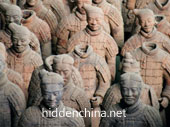
Day 18: Xi’an
Today we have a look at the well-preserved city wall, the Big Wild Goose Pagoda, the Drum and Bell Tower, and the Muslim district. You will have a dumpling dinner and join a Tang-dynasty song-and-dance show in the evening. Overnight at “Jianguo Hotel” (4*). The Big Wild Goose Pagoda was built in 652 during the Tang Dynasty and back then had five stories. The pagoda was built to store sutras and figurines of Buddha, which were brought to China by the Buddhist translator and traveller Xuanzang. 
Known as the symbol of Xi’an, the history of the Drum and Bell Tower can be traced back to the Ming dynasty. Each Ming city had a bell tower and a drum tower. The bell was sounded at dawn and the drum at dusk. The Bell Tower was originally set at the intersection of Xi Dajie (West Street) and Guangji Jie (Guangji Street) in the Yingxiang Temple, which was the centre of the site of the old Tang Imperial City. It was removed to its present place in 1582 in the centre of the southern section of the walled city and was restored several times.
The Great Mosque of Xian is located in the “Huajue Xiang” district, inhabited mainly by the Muslim Hui minority. The 60,000 strong Muslim community that lives and works today in Xian traces its history to Arab and Persian merchants who, after travelling the Silk Road, became permanent residents of such cities as Guangzhou, Quanzhou, Hangzhou, Yangzhou, and Xi’an.
 Day 19: Xi’an
Day 19: Xi’an
One of China’s most famous cultural and historic sites is on today’s program. The Terracotta Army is probably one of the world’s most stunning UNESCO world heritage sites. Even though everybody knows how the Terracotta Warriors look like, you will be more than impressed by the size of the whole site. Additionally, we will visit the site of the yet unopened grave of the Yellow Emperor Qin Shihuang. Qin Shi Huang was king of the Chinese State of Qin from 247 BCE to 221 BCE, and then the first emperor of a unified China from 221 BC to 210 BC, ruling under the name First Emperor. Having unified China, he passed a series of major reforms aimed at cementing the unification, and they undertook some Herculean construction projects, most notably the precursor version of the current Great Wall of China.
Therefore he is still regarded by many today as the founding father of Chinese history. The Terracotta Army is a collection of 8,099 life-size terra cotta figures of warriors and horses located near the Mausoleum of the First Qin Emperor, which was buried with him after his death. We have dinner in the city and stay overnight at “Jian Guo Hotel” (4*).
 Day 20: Xi’an. End of 20 Days Motorcycle Touring Through China.
Day 20: Xi’an. End of 20 Days Motorcycle Touring Through China.
Transfer to the airport for your flight back home. End of trip.
Contact us per mail for a tailor-made itinerary and cost details and options of 20 Days Motorcycle Touring Through China.
Including
Experienced tour leader and local tour guides for all days, English/Chinese-speaking;
Mechanics and spare parts for the motorbikes;
Motorbikes Chang Jiang 750;
Chinese driver’s license;
Accommodation in selected hotels in double rooms as mentioned in the itinerary;
Outside the cities accommodation in basic, but clean guest houses in double rooms;
Full board except on free afternoons/evenings;
Entrance fees to sightseeing spots mentioned in the itinerary;
All transfers mentioned in the itinerary.
Not Including
Flight tickets to Urumqi and from Xi’an;
Personal expenses such as laundry, tips, etc;
Transports not mentioned in the itinerary (such as taxis in the evening, etc.);
Drinks and all meals not mentioned in the itinerary;
Import license and fees if you want to bring your own bike to China for this tour;
Expenses for medical care;
Insurances (travel insurance, travel cancellation insurance);
Repatriation flights in case of emergencies.
More China Adventure Tours
– 11 Days Western China riding
– 13 Days cycling Western China
– 14 Days 4wd Tibet Sichuan
– 17 Days trekking Northern Yunnan
– 18 Days Mount Genyen trekking
– Custom tours

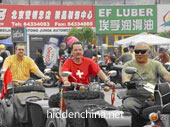










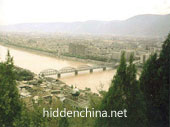


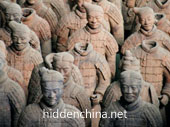
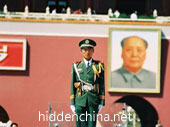

Are highway tolls included in the cost? I heard highway tolls in China are very costly.
Yes, I think so. You can log on our partner’s website and ask them for current going rate and inclusion. Thanks.
Hello,
I would like to ride from southern China to Mongolia. I have my bike already built and ready to go it is a DR 650. I would be doing this trip late spring early summer, but that can change also. I want to solo China, I have a 10-year visa that I got on my first visit. Is this something that is possible? I will be in Southern Asia for 3months starting November 1, and buying a bike in Hanoi and riding to Singapore if everything works out! I would approach any info you could give me that would help out.
Thank you.
Shane.
Dear Shane,
We are based in Hanoi, Northern Vietnam and use partners in other countries. However, they don’t assist in just paperwork or planning as you wanted. For bikes you can buy from us, please have a look at this link. Touring bikes in Vietnam come with 120% taxes and it would cost twice as much as in your home country.